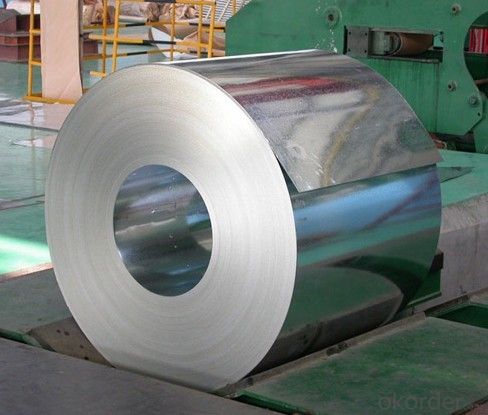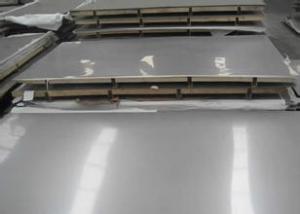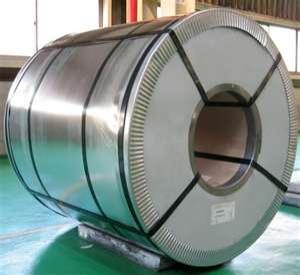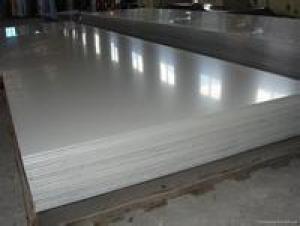Stainless Steel Sheet Hairline 0.6mmx1220mmx2440mm
- Loading Port:
- Shanghai
- Payment Terms:
- TT OR LC
- Min Order Qty:
- 25 m.t.
- Supply Capability:
- 2500 m.t./month
OKorder Service Pledge
OKorder Financial Service
You Might Also Like
Product Introduction of Stainless Steel Sheet Hairline 0.6mmx1220mmx2440mm:
Our Stainless Steel products including the stainless steel sheet/plate, stainless steel coil, stainless steel rod/bar, stainless steel angle, stainless steel strip, stainless steel flat, carbon steel products and alloy steel materials. It also can supply the processing of surface, like No.4, BA, HL, SB, 8K, and so on.
Loading Quantity of Stainless Steel Sheet Hairline 0.6mmx1220mmx2440mm: 25 Tons/20FCL.
Grade of Stainless Steel Sheet Hairline 0.6mmx1220mmx2440mm: 201, 306, 316 Etc.
Delivery Time of Stainless Steel Sheet Hairline 0.6mmx1220mmx2440mm: 20 days Per Container.


Application of Stainless Steel Sheet Hairline 0.6mmx1220mmx2440mm:
| Finish | Thickness | Characteristics | Applications |
| No. 1 | 3.0mm~50.0mm | Finished by hot-rolling, annealing and pickling, characterized by white pickled surface | Chemical industry equipment, Industrial tanks |
| No. 2B | 0.3mm~6.0mm | Finished by heat treatment, pickling after cold rolling, followed by skin pass line to be more brighter and smooth surface | General Application Medical Instruments,Tableware |
| No. BA (Bright Annealed) | 0.5mm~2.0mm | Bright heat treatment after cold rolling | Kitchen utensil, kitchen ware,architectural purpose |
| No. 4 | 0.4mm~3.0mm | Polishing with No. 150 to No.180 mesh abrasivesThe most popular finishes | Milk & Food processing acilities, Hospital Equipment, Bath-tub |
| HL(Hair Line) | 0.4mm~3.0mm | Finished by continuous linear polishing | Architectural purposes, escalators, kitchen ware vehicles |
Specification of Stainless Steel Sheet Hairline 0.6mmx1220mmx2440mm:
Type | Wuxi boro-304/304L/316/316L/321/309S/310S/904L/202/201/430 stainless steel sheet |
Thinckness | 0.3mm-60mm |
Widthness | 50mm~2000mm or customized |
Length | 1000mm~8000mm or customized |
Brand name | CNBM |
Standard | JIS, AISI, ASTM, GB, DIN, EN |
Material | 201/201/304/304L/316/316L/321/309S/310S/904L stainless steel sheet |
Surface | 2B,BA,HL,BK,NO.1,NO.4,8K,SB,etc |
Certificate | We accept the third inspections--SGS-BV etc. |
Application | Bridge, Shipbuilding,roofing,Car, etc |
Standard sheet sizes | 1000mm*2000mm,1250mm*2500mm,1219mm*2438mm,1500mm*3000mm We can produce other standard as customized |
FAQ
Q: CAN YOU PROVIDE MILL TEST CERTIFICATE?
A: YES! Mill Test Certificate for Stainless Steel Sheet Hairline 0.6mmx1220mmx2440mm are available.
Q: CAN YOU MAKE DDQ (DEEP DRAWING QUALITY)?
A: YES. Our material has been widely used for producing Stainless Steel Pots and Stainless Steel Sinks, which have strict request for good deep drawing quality.
Q: HOW TO GET A SAMPLE?
A: FREE samples for Stainless Steel Sheet Hairline 0.6mmx1220mmx2440mm for your checking and testing. And to get free samples, you need to send us you detailed receiving address (including post code) and your DHL/FedEx/UPS account for collecting samples, courier cost will be paid in your side.
- Q:What do stainless steel 304 industrial surfaces refer to?
- Stainless steel surface, there are many kinds, such as: BA, 2B, industrial.2B, is relatively smooth surface, industrial surface is more rough. These are raw materials, you can process the surface. But the industrial price is cheaper!
- Q:What is the magnetic permeability of stainless steel sheets?
- The magnetic permeability of stainless steel sheets is typically very low, making them non-magnetic or only weakly magnetic.
- Q:Can stainless steel sheets be used for water tanks?
- Indeed, water tanks can utilize stainless steel sheets. Stainless steel, renowned for its corrosion-resistant qualities, is a favored selection for water tanks. It exhibits remarkable resistance to rust and endures exposure to water and moisture without undergoing deterioration. Moreover, stainless steel guarantees hygiene as it does not react with water or release any detrimental substances into it. Furthermore, stainless steel tanks are robust and enduring, rendering them an unwavering choice for water storage. In conclusion, stainless steel sheets serve as an appropriate material for constructing water tanks, ensuring a secure and dependable solution for water storage.
- Q:Are stainless steel sheets suitable for architectural panels?
- Yes, stainless steel sheets are suitable for architectural panels. Stainless steel is a highly versatile and durable material that offers numerous benefits for architectural applications. It is resistant to corrosion, staining, and rust, making it ideal for exterior applications where exposure to harsh weather conditions is expected. Stainless steel also maintains its appearance over time, ensuring that architectural panels retain their aesthetic appeal for years to come. In addition to its durability, stainless steel offers a wide range of design possibilities. It can be fabricated into various shapes and sizes, allowing for the creation of unique and visually appealing architectural panels. Stainless steel also comes in different finishes, such as brushed, polished, or patterned, giving architects and designers the flexibility to achieve the desired look and feel for their projects. Furthermore, stainless steel is environmentally friendly. It is fully recyclable, making it a sustainable choice for architectural panels. By using stainless steel sheets for architectural applications, architects and designers can contribute to reducing the environmental impact of construction projects. Overall, stainless steel sheets provide a combination of strength, aesthetics, and sustainability that make them highly suitable for architectural panels. Whether it is for exterior cladding, interior partitions, or decorative elements, stainless steel offers a durable, versatile, and visually appealing solution for architectural design.
- Q:What's the difference between galvanized steel and stainless steel?
- The corrosion resistance of stainless steel decreases with the increase of carbon content. Therefore, the carbon content of most stainless steel is lower, the maximum is not more than 1.2%, and the Wc (carbon content) of some steel is even lower than 0.03% (such as 00Cr12). The main alloying element in stainless steel is Cr (chromium), which is corrosion resistant only when the Cr content reaches a certain value. Therefore, stainless steel in general Cr (chromium) content of at least 10.5%. Stainless steel also contains Ni, Ti, Mn, N, Nb, Mo, Si and other elements.
- Q:What are the benefits of using embossed stainless steel sheets in elevator interiors?
- Embossed stainless steel sheets offer several benefits in elevator interiors. Firstly, they add a touch of elegance and sophistication, enhancing the overall aesthetics of the elevator. Additionally, the embossed pattern provides a unique texture, creating visual interest and making the interior more visually appealing. Moreover, stainless steel is highly durable, resistant to corrosion and staining, ensuring the longevity and easy maintenance of the elevator interior. Lastly, the reflective properties of stainless steel sheets can help to brighten the space, making it feel more open and spacious.
- Q:What are the different types of perforated patterns available for stainless steel sheets?
- Stainless steel sheets come in a variety of perforated patterns, each serving specific purposes and meeting different aesthetic preferences. Let's explore some commonly used patterns: 1. The round hole pattern is the most widely used and basic design. It consists of evenly spaced round holes that allow for excellent airflow and drainage. It finds its applications in industrial filtration systems or as decorative panels. 2. The square hole pattern, similar to the round hole pattern, offers a more geometric and uniform appearance. It is often preferred for architectural and decorative purposes, providing a modern and sleek look. 3. The slotted hole pattern consists of elongated and rectangular holes, allowing for more flexibility in terms of airflow and visibility. It is commonly used in grills or air ventilation systems where better drainage or a higher open area is required. 4. The hexagonal hole pattern offers a unique and visually appealing design. It provides excellent strength and structural integrity, making it suitable for applications requiring durability, such as safety barriers or machine guards. 5. In addition to the standard patterns, there are various decorative hole patterns available for stainless steel sheets. These patterns feature intricate designs or shapes, adding an artistic touch to architectural and interior design applications. When selecting a perforated pattern for stainless steel sheets, it is important to consider the specific requirements of your project, such as airflow, visibility, drainage, or aesthetic appeal. Consulting with a supplier or expert in the field can help you make an informed decision based on your needs.
- Q:What is the maximum length of a stainless steel sheet?
- The potential length of a stainless steel sheet is subject to various factors, such as manufacturing capabilities, supplier limitations, and transportation constraints. Typically, stainless steel sheets can be manufactured in lengths spanning from a few feet to several hundred feet. Nevertheless, it should be emphasized that longer lengths might pose challenges in terms of handling and transportation, potentially affecting their availability and cost. Moreover, customized orders or specific applications could permit even lengthier stainless steel sheets. Thus, consulting with manufacturers or suppliers is advisable to ascertain the precise maximum length options offered for stainless steel sheets.
- Q:How do you remove adhesive residue from stainless steel sheets?
- To effectively eliminate adhesive residue from stainless steel sheets, the following steps can be followed: 1. Commence by delicately scraping off as much of the residue as possible using a plastic scraper or your fingernail. Exercise caution to avoid scratching the stainless steel surface. 2. Subsequently, moisten a soft cloth with warm water and a mild detergent or dish soap. Employ gentle circular motions to scrub the adhesive residue. Refrain from using abrasive cleaners or scrub brushes as they have the potential to harm the stainless steel finish. 3. If the adhesive residue persists, consider utilizing a non-abrasive cleaner specifically designed for stainless steel. Apply a small quantity of the cleaner to a soft cloth and gently rub the residue until it detaches. 4. In the case of tenacious adhesive residue, a paste can be concocted by combining baking soda and water. Apply the paste to the affected area and allow it to sit for a few minutes. Subsequently, utilize a soft cloth to gently scrub the residue in circular motions. 5. Thoroughly rinse the stainless steel sheet with warm water to eliminate any remaining residue or cleaner. 6. Finally, employ a clean, soft cloth to dry the surface, thereby preventing water spots and streaks. It is important to always test any cleaning method or product on a small, inconspicuous area of the stainless steel sheet prior to applying it to the entire surface. This precautionary measure ensures that no damage or discoloration occurs.
- Q:How do you determine the best thickness of stainless steel sheet for a specific application?
- To determine the best thickness of stainless steel sheet for a specific application, several factors need to be considered. These factors include the required strength, durability, and corrosion resistance for the application, as well as any weight or cost limitations. It is also crucial to analyze the mechanical and chemical properties of the stainless steel and evaluate its compatibility with the intended environment and potential stress factors. Engineering calculations, industry standards, and consultation with material experts or engineers can help in making an informed decision about the appropriate thickness for the stainless steel sheet.
1. Manufacturer Overview |
|
|---|---|
| Location | |
| Year Established | |
| Annual Output Value | |
| Main Markets | |
| Company Certifications | |
2. Manufacturer Certificates |
|
|---|---|
| a) Certification Name | |
| Range | |
| Reference | |
| Validity Period | |
3. Manufacturer Capability |
|
|---|---|
| a)Trade Capacity | |
| Nearest Port | |
| Export Percentage | |
| No.of Employees in Trade Department | |
| Language Spoken: | |
| b)Factory Information | |
| Factory Size: | |
| No. of Production Lines | |
| Contract Manufacturing | |
| Product Price Range | |
Send your message to us
Stainless Steel Sheet Hairline 0.6mmx1220mmx2440mm
- Loading Port:
- Shanghai
- Payment Terms:
- TT OR LC
- Min Order Qty:
- 25 m.t.
- Supply Capability:
- 2500 m.t./month
OKorder Service Pledge
OKorder Financial Service
Similar products
New products
Hot products
Hot Searches
Related keywords






























